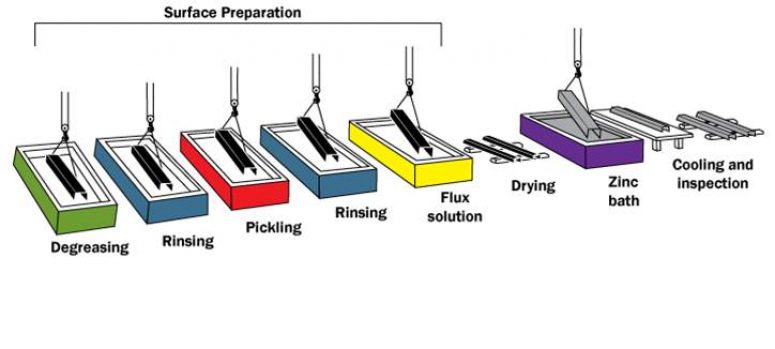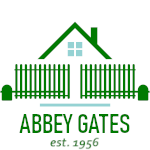We galvanize all our gates to ensure longevity and durability. Galvanizing is the process of coating iron and steel with a thin layer of zinc and passing it through a molten bath at a temperature of 460°C.
When exposed to this atmosphere, the zinc reacts with oxygen to form zinc oxide, which then reacts further with carbon dioxide to form zinc carbonate. This creates a strong material that stops corrosion by protecting the steel below from the elements which can cause rusting.
Hot-dip galvanising is the process of coating steel with zinc to help prevent corrosion. This process involves the immersion of the steel in a bath of molten zinc at a temperature of roughly 450°C. The zinc chemically reacts with the metal to form a protective coating which can potentially remain rust-free for over 100 years.
Scotland is a fantastic place to live, the scenery is spectacular and the cities are jam-packed with beautiful buildings. However, the weather could be better, that’s why at Abbey Gates we recommend having your gates and railings galvanized and painted to protect them from damage and weathering.

If required we can galvanise your gates to ensure their longevity and durability. Galvanizing is the process of coating iron and steel with a thin layer of zinc by passing it through a molten bath at a temperature of 450°C. When exposed to this atmosphere, the zinc reacts with oxygen to form zinc oxide, which then reacts further with carbon dioxide to form zinc carbonate. This creates a strong material that stops corrosion by protecting the steel below from the elements which cause rusting.
After the galvanizing process we prime the coating before painting, this ensures that the paint goes on evenly and prevents the paint from peeling or flaking off from weathering.
What are the benefits of galvanizing and priming your new driveway gate?
- Ensures your gates or railings give the best first impression
- Saves you money as galvanized iron and steel has long-lasting effects
- This type of coating has a unique metallurgical structure which has a high resistance to damage, rusting or staining
- Due to the object being ‘dipped’, the molten zinc is able to cover an entire surface without missing out hard-to-reach corners.
- Molten zinc (unlike other coatings) has a surprisingly thick build up on the steel or iron object’s corners
- Priming the galvanized coat is necessary, this ensures the paint goes on evenly and is resistant to peeling
This process will cost extra, but we definitely recommend it to all our customers for all gate and railing purchases from Abbey Gates. So Contact us today for more information on our outstanding products and services.
How to achieve the best coating finish possible.
The picture below illustrates the many stages of the galvanising process. The material must be cleaned in multiple different chemical pre-treatment tanks. Due to this, the hollow items must have suitably sized holes in the correct place to allow immersion to happen with no restrictions. All materials must have no paint, sticker residue or any other surface contaminants as they prevent the chemicals from cleaning the steel and stop the zinc bonding with the steel. Clean steel, venting and drainage holes are crucial to the Galvanising process and the quality of the finish you receive.
Galvanizing is mainly used as an industrial coating for corrosion prevention. However, we use Galvanising, as an option, on our gates so that our customers can get the best possible surface finish.
The diagram shows the stages of Galvanizing and how the material is processed through the chemical tanks and zinc bath. Read more about the benefits of galvanising.

